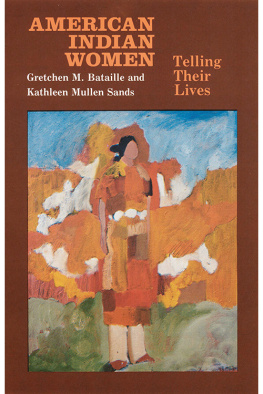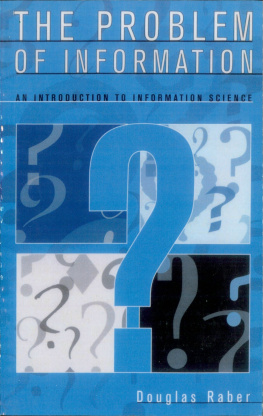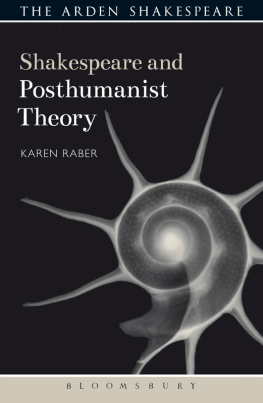THE NATURE AND PACE OF CHANGE IN AMERICAN INDIAN CULTURES
RECENT RESEARCH IN PENNSYLVANIA ARCHAEOLOGY
Paul A. Raber, Series Editor
The Archaic Period in Pennsylvania: Hunter-Gatherers of the Early and Middle Holocene Period, VOL . 1
Edited by Paul A. Raber, Patricia E. Miller, and Sarah M. Neusius
Published by the Pennsylvania Historical and Museum Commission in cooperation with the Pennsylvania Archaeological Council
Ice Age Peoples of Pennsylvania, VOL . 2
Edited by Kurt W. Carr and James M. Adovasio
Published by the Pennsylvania Historical and Museum Commission in cooperation with the Pennsylvania Archaeological Council
Foragers and Farmers of the Early and Middle Woodland Periods in Pennsylvania, VOL . 3
Edited by Paul A. Raber and Verna L. Cowin
Published by the Pennsylvania Historical and Museum Commission in cooperation with the Pennsylvania Archaeological Council

Publication of this book has been supported in part by the Eastern States Archaeological Federation, the Society for Pennsylvania Archaeology, and the Pennsylvania Archaeological Council.
Library of Congress Cataloging-in-Publication Data
The nature and pace of change in American Indian cultures : Pennsylvania, 4000 to 3000 BP / edited by R. Michael Stewart, Kurt W. Carr, and Paul A. Raber.
pages cm (Recent research in Pennsylvania archaeology)
Summary: A collection of essays addressing aspects of Native American life in the Susquehanna and Delaware River basin from 4000 to 3000 BP, the pre-existing traditions from which they emerged, and explanations for how and why social and cultural change took placeProvided by publisher.
Includes bibliographical references and index.
ISBN 978-0-271-07095-7 (pbk. : alk. paper)
1. PennsylvaniaAntiquities. 2. Indians of North AmericaPennsylvania Antiquities.
I. Stewart, R. Michael (Richard Michael), editor. II. Carr, Kurt W. (Kurt William), 1949 , editor. III. Raber, Paul A., editor. IV. Series: Recent research in Pennsylvania archaeology.
E78.P4N38 2015
974.801dc23
2015026644
Copyright 2015 The Pennsylvania State University
All rights reserved
Published by The Pennsylvania State University Press, University Park, PA 168021003
The Pennsylvania State University Press is a member of the Association of American University Presses.
It is the policy of The Pennsylvania State University Press to use acid-free paper. Publications on uncoated stock satisfy the minimum requirements of American National Standard for Information SciencesPermanence of Paper for Printed Library Material, ANSI Z 39.481992.
CONTENTS
ABSTRACT
The background for the development and significance of the contributions to this volume is provided and individual contributions are summarized. Theoretical perspectives on the pace, chronology, and historical context of change are discussed with respect to issues raised in the contributions. A Middle Atlantic regional perspective is provided on selected topics.
It is a basic assumption of anthropologists and archaeologists that all societies and cultures are in a constant state of transition. Variation is inherent in any sociocultural system: potential sources of change are always there. This volume focuses on a period of time in regional prehistory that represents the interface between what have typically been considered as two distinctive trends in ancient Native American lifeways, those defined as Archaic and those defined as Woodland. Variously referred to as the Transitional Archaic period, the Transitional period, or the Terminal Archaic period, it is held to be a time of change, recognized throughout the Middle Atlantic region, seemingly more dramatic than what precedes it or what follows after. The Nature and Pace of Change in American Indian Cultures: Pennsylvania, 4000 to 3000 BP is an exploration of what we now know and understand about the Transitional Archaic period based on archaeological data drawn primarily from sites in the Susquehanna and Delaware River basins of Pennsylvania and New Jersey.
John Witthofts 1953 publication on broadspear-using Transitional cultures in Pennsylvania focused attention on the state and the general period of time that is examined in the chapters that follow. When first defined by Witthoft, the Transitional period was characterized by broad-bladed bifaces, cache blades, steatite bowls, consistent evidence of trade, distinctive lithic preferences, the initial appearance of ceramics, and adaptations with a riverine focus. Large fire-cracked rock features, a curated lithic technology, an emphasis on staged, bifacial lithic reduction strategies, and, in some areas, burial ceremonialism have been added to this list over the years (e.g., Custer 1996; Dent 1995; Kinsey 1972; Kraft 2001).
Some researchers have linked the appearance and development of these characteristics to environmental change, specifically, the warm and dry conditions of the Sub-Boreal climatic episode. The adaptive significance of the material culture and the cultural and social behaviors of the time remains unclear, and differing interpretive perspectives remain to be explored more thoroughly. The Transitional period certainly represents a time of changes, but are these any more rapid or dramatic than previous or subsequent changes in the social and cultural life of the American Indians of the Middle Atlantic region? What are the cultural historical contexts from which the things that we consider to be Transitional emerge? In other words, what are the preexisting cultural traditions that are the platform for human agency, decision making, and innovation during the period variously referred to as the Transitional Archaic, Transitional, or Terminal Archaic? And what are the processes of change that we believe we are detecting in the archaeological record?
The contributors to this volume examine some of the foundational evidence relevant to the time, the degree to which trends can be defined for the Susquehanna and Delaware River basins and the broader Middle Atlantic region, the implications of these trends, and the frameworks that could profitably be used in crafting interpretations of social and cultural change. Their contributions are the result of a symposium, The Nature and Pace of Change in American Indian Cultures, 3000 to 4000 BP, organized by Kurt Carr and me and sponsored by the Pennsylvania Archaeological Council at the 2009 meeting of the Society for Pennsylvania Archaeology in Harrisburg, later reprised at the 2009 meeting of the Eastern States Archaeological Federation in Johnstown, Pennsylvania.
The period referred to in the symposiums original title was chosen to roughly encompass the time during which different forms of broad-bladed stemmed bifaces occur on sites in Pennsylvania and the broader Middle Atlantic region. The time from 4500 to 2700 BP (2550 to 750 BC) is nearer the mark, as reflected by radiocarbon-dated contexts from the Middle Atlantic region (e.g., Custer 1996:17180, 2001; Dent 1995:Table 5.4), and given the habit of many researchers of including components with Fishtail-type stemmed bifaces. The contributors to this volume employ variable scales of time depending on their analytic focus and the data upon which they draw. That they do not employ the same chronological framework should not be too surprising. The periods that archaeologists use to organize big picture discussions of the past falsely imply that social and cultural changes occurred in lockstep over broad geographic areas. In fact, environmental variability and the nature and individual (pre)histories of the native groups impact how, when, and to what degree changes in behavior and material culture will be manifested. This is reflected in the variable chronological benchmarks and points of view promoted by the authors in this volume.












